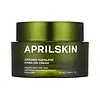What's inside
What's inside
 Key Ingredients
Key Ingredients

 Benefits
Benefits

 Concerns
Concerns

No concerns
 Ingredients Side-by-side
Ingredients Side-by-side

Water
Skin ConditioningNiacinamide
SmoothingC15-19 Alkane
SolventCetyl Alcohol
EmollientGlyceryl Stearate Se
EmulsifyingPolyglyceryl-6 Stearate
EmollientHydroxystearic Acid
CleansingRosa Canina Seed Oil
EmollientCucurbita Pepo Seed Oil
EmollientTocopherol
AntioxidantGlycerin
HumectantSodium Anisate
AntimicrobialSodium Levulinate
Skin ConditioningSodium Ascorbyl Phosphate
AntioxidantCorn Starch Modified
AbsorbentGlyceryl Caprylate
Emollient3-O-Ethyl Ascorbic Acid
Skin ConditioningGellan Gum
Polyglyceryl-6 Behenate
Emulsion StabilisingSodium Phytate
Citrus Bergamia Peel Oil Expressed 0.226%
PerfumingWater, Niacinamide, C15-19 Alkane, Cetyl Alcohol, Glyceryl Stearate Se, Polyglyceryl-6 Stearate, Hydroxystearic Acid, Rosa Canina Seed Oil, Cucurbita Pepo Seed Oil, Tocopherol, Glycerin, Sodium Anisate, Sodium Levulinate, Sodium Ascorbyl Phosphate, Corn Starch Modified, Glyceryl Caprylate, 3-O-Ethyl Ascorbic Acid, Gellan Gum, Polyglyceryl-6 Behenate, Sodium Phytate, Citrus Bergamia Peel Oil Expressed 0.226%
Artemisia Vulgaris Extract 80%
Skin ConditioningWater
Skin ConditioningSqualane 3%
EmollientMethylpropanediol
SolventGlycerin
Humectant1,2-Hexanediol
Skin ConditioningCoco-Caprylate/Caprate
EmollientSaccharide Hydrolysate
HumectantCetearyl Olivate
Ammonium Acryloyldimethyltaurate/Vp Copolymer
Niacinamide
SmoothingSorbitan Olivate
EmulsifyingButylene Glycol
HumectantTrehalose
HumectantEthylhexylglycerin
Skin ConditioningDipotassium Glycyrrhizate
HumectantAllantoin
Skin ConditioningOryza Sativa Bran Extract
Skin ConditioningCarbomer
Emulsion StabilisingXanthan Gum
EmulsifyingFructooligosaccharides
HumectantTromethamine
BufferingAdenosine
Skin ConditioningPullulan
Saccharum Officinarum Extract
MoisturisingSodium Hyaluronate
HumectantIndigofera Tinctoria Extract
MaskingHyaluronic Acid
HumectantMoringa Oleifera Seed Oil
EmollientSodium Hyaluronate Crosspolymer
HumectantHydrolyzed Sodium Hyaluronate
Skin ConditioningHydrolyzed Hyaluronic Acid
HumectantHemerocallis Fulva Flower Extract
Skin ConditioningCeramide NP
Skin ConditioningMyosotis Sylvatica Flower/Leaf/Stem Extract
Skin ConditioningPhytosphingosine
Skin ConditioningSodium Acetylated Hyaluronate
HumectantHydroxypropyltrimonium Hyaluronate
Hydrogenated Lecithin
EmulsifyingCI 75810
Cosmetic ColorantArtemisia Vulgaris Extract 80%, Water, Squalane 3%, Methylpropanediol, Glycerin, 1,2-Hexanediol, Coco-Caprylate/Caprate, Saccharide Hydrolysate, Cetearyl Olivate, Ammonium Acryloyldimethyltaurate/Vp Copolymer, Niacinamide, Sorbitan Olivate, Butylene Glycol, Trehalose, Ethylhexylglycerin, Dipotassium Glycyrrhizate, Allantoin, Oryza Sativa Bran Extract, Carbomer, Xanthan Gum, Fructooligosaccharides, Tromethamine, Adenosine, Pullulan, Saccharum Officinarum Extract, Sodium Hyaluronate, Indigofera Tinctoria Extract, Hyaluronic Acid, Moringa Oleifera Seed Oil, Sodium Hyaluronate Crosspolymer, Hydrolyzed Sodium Hyaluronate, Hydrolyzed Hyaluronic Acid, Hemerocallis Fulva Flower Extract, Ceramide NP, Myosotis Sylvatica Flower/Leaf/Stem Extract, Phytosphingosine, Sodium Acetylated Hyaluronate, Hydroxypropyltrimonium Hyaluronate, Hydrogenated Lecithin, CI 75810
Ingredients Explained
These ingredients are found in both products.
Ingredients higher up in an ingredient list are typically present in a larger amount.
Glycerin is already naturally found in your skin. It helps moisturize and protect your skin.
A study from 2016 found glycerin to be more effective as a humectant than AHAs and hyaluronic acid.
As a humectant, it helps the skin stay hydrated by pulling moisture to your skin. The low molecular weight of glycerin allows it to pull moisture into the deeper layers of your skin.
Hydrated skin improves your skin barrier; Your skin barrier helps protect against irritants and bacteria.
Glycerin has also been found to have antimicrobial and antiviral properties. Due to these properties, glycerin is often used in wound and burn treatments.
In cosmetics, glycerin is usually derived from plants such as soybean or palm. However, it can also be sourced from animals, such as tallow or animal fat.
This ingredient is organic, colorless, odorless, and non-toxic.
Glycerin is the name for this ingredient in American English. British English uses Glycerol/Glycerine.
Learn more about GlycerinNiacinamide is a multitasking form of vitamin B3 that strengthens the skin barrier, reduces pores and dark spots, regulates oil, and improves signs of aging.
And the best part? It's gentle and well-tolerated by most skin types, including sensitive and reactive skin.
You might have heard of "niacin flush", or the reddening of skin that causes itchiness. Niacinamide has not been found to cause this.
In very rare cases, some individuals may not be able to tolerate niacinamide at all or experience an allergic reaction to it.
If you are experiencing flaking, irritation, and dryness with this ingredient, be sure to double check all your products as this ingredient can be found in all categories of skincare.
When incorporating niacinamide into your routine, look out for concentration amounts. Typically, 5% niacinamide provides benefits such as fading dark spots. However, if you have sensitive skin, it is better to begin with a smaller concentration.
When you apply niacinamide to your skin, your body converts it into nicotinamide adenine dinucleotide (NAD). NAD is an essential coenzyme that is already found in your cells as "fuel" and powers countless biological processes.
In your skin, NAD helps repair cell damage, produce new healthy cells, support collagen production, strengthen the skin barrier, and fight environmental stressors (like UV and pollution).
Our natural NAD levels start to decline with age, leading to slower skin repair, visible aging, and a weaker skin barrier. By providing your skin niacinamide, you're recharging your skin's NAD levels. This leads to stronger, healthier, and younger looking skin.
Another name for vitamin B3 is nicotinamide. This vitamin is water-soluble and our bodies don't store it. We obtain Vitamin B3 from either food or skincare. Meat, fish, wheat, yeast, and leafy greens contain vitamin B3.
The type of niacinamide used in skincare is synthetically created.
Learn more about NiacinamideWater. It's the most common cosmetic ingredient of all. You'll usually see it at the top of ingredient lists, meaning that it makes up the largest part of the product.
So why is it so popular? Water most often acts as a solvent - this means that it helps dissolve other ingredients into the formulation.
You'll also recognize water as that liquid we all need to stay alive. If you see this, drink a glass of water. Stay hydrated!
Learn more about Water